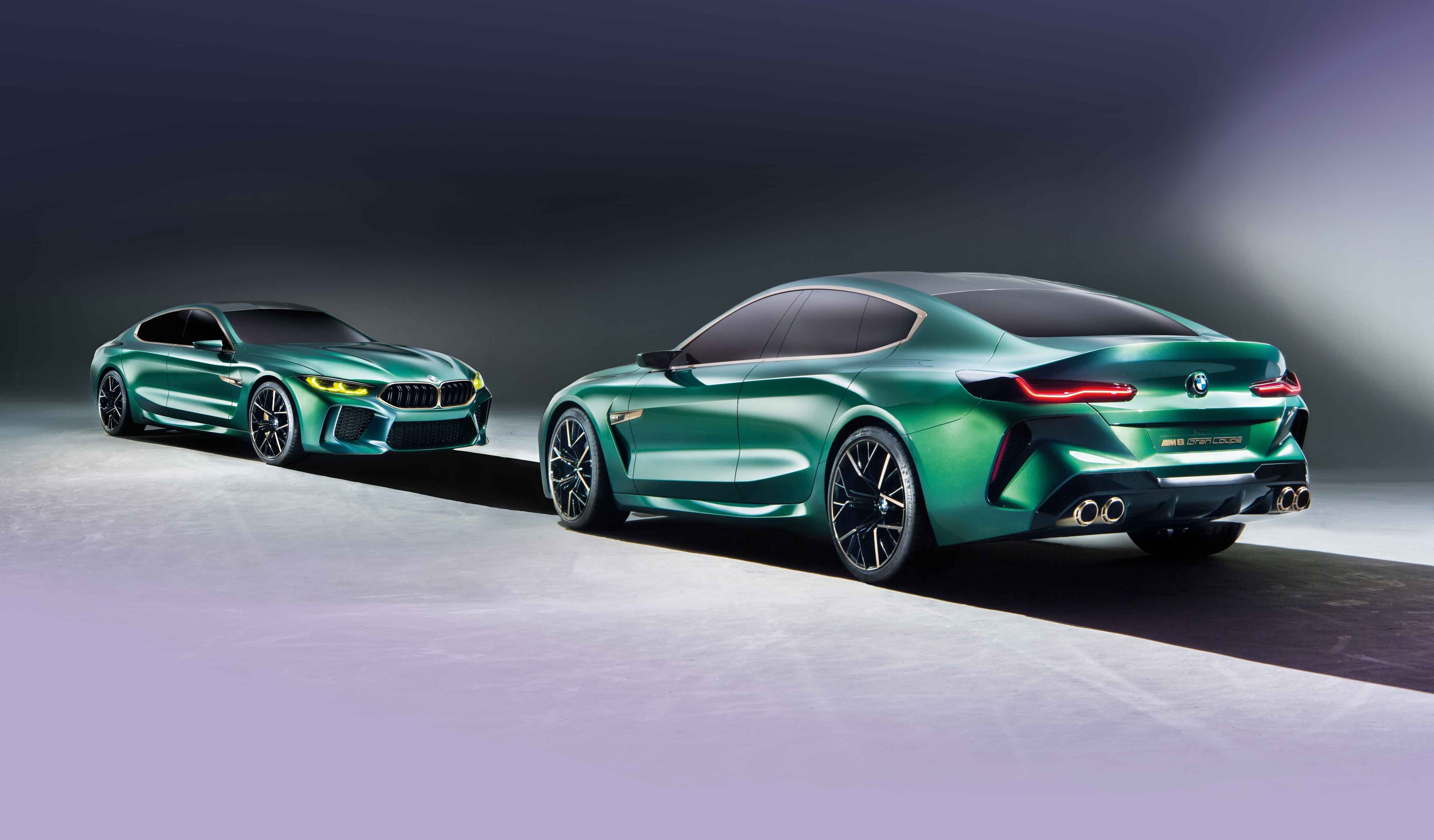First look: BMW M8 Gran Coupe Concept
The BMW M8 Gran Coupe credentials will put it right in the thick of the high-performance-limousine action, expect a 600bhp show car and a proper ‘M’ spirit
 The BMW M8 Gran Coupe credentials will put it right in the thick of the high-performance-limousine action, expect a 600bhp show car and a proper ‘M’ spirit
The BMW M8 Gran Coupe credentials will put it right in the thick of the high-performance-limousine action, expect a 600bhp show car and a proper ‘M’ spiritMechanicals of the BMW M8 Gran Coupe Concept
BMW is remaining tight-lipped about what lies beneath the skin of the M8 Gran Coupe, but we’re not expecting any surprises. Powering the production version should be the 4.4-litre twin-turbo V8 from the new M5, with just shy of 600bhp and a similar figure in Nm for peak torque. It should also use the M5’s four-wheel drive system, complete with the ability to be rear-drive only if you select the appropriate driving mode. Such credentials will put the M8 right in the thick of the high-performance-limousine action, with rivals including Porsche’s Panamera Turbo, Mercedes-AMG’s GT63 S and Audi’s next RS7, which is said to offer both conventional and electrically boosted powertrains.
Paint and metal shaping
The largely green but also blue-grey flip paint is called Salève Vert – after a mountain near Geneva. It’s supposed to signify the Jekyll and Hyde aspect of the car: the angry green the overarching colour; grey being the undertone of luxury, with the sudden flash of blue signifying BMW M. BMW is also confident that it can now introduce the kind of finger-slicingly sharp creases in aluminium that have so far proved impossible with the company’s design complex language and its avoidance of parallel lines. As Domagoj Dukec, vice president of design for BMW i and M, explains: ‘We want expression first, precision second. We believe we can now do both – crisp lines and sculptured surfaces.’
“We want expression first, precision second”
Design
At over five metres long it’s a big car, and it’s also slightly taller than the 8-series Coupe that BMW has recently shown in camouflaged form. However, the extra height has been well disguised by the flowing fastback roofline. At the rear, the use of a plastic bootlid enables a pronounced, integrated ducktail spoiler, while the rear wheel arches are wider than on the regular 8-series Coupe, giving the car a ‘Coke bottle’ appearance down the flanks. There’s an extra crease line along the sides, too, which Dukec says gives a sense of power and prestige compared with the softer, more ‘sexy’ curves of the coupe.
M bits
There will be non-M versions of the 8-series Gran Coupe too, so which elements are specific to the M-car? Unsurprisingly, the three-intake front bumper is an M part, as are the wider front wheelarches, the carbon roof panel and the rear diffuser. But it’s the M’s yellow daytime running lights that really stand out, taking inspiration from the M8 GTE endurance racer. Dukec says BMW is trying to make them legal for production. The wheels may look like previous M alloys, but they feature something BMW believes is an industry first. The lighter surfaces are achieved by milling, not painting, and the angled faces give the wheels a diamond effect on the move, rather than the usual rotating-disc look.
“The M8 Gran Coupe is one of the more successful meldings of a sportier profile with four-door practicality.”
evo comment
As BMW’s flagship, the M8 Gran Coupe will play an important role and face some formidable foes. The parting words of Dukec suggest it should be up to the task: ‘We’ve had a lot of downsizing at BMW, like the Active Tourer and BMW i. We needed to do it, to make us credible for the future. But there’s the other extreme, and we need to strengthen our business around luxury and performance. BMW is a “Latin” German car maker – about emotions. But we lost this in recent years because we had other business to do. But there are still enough people who love it [performance cars], and they said what’s going on with BMW? I think this car is a good offer [for them].’
BMW with its sporting mojo back? Let’s hope so.


